Recombinant Mouse Autophagy protein 5 (Atg5)
-
货号:CSB-YP859123MO
-
规格:
-
来源:Yeast
-
其他:
-
货号:CSB-EP859123MO
-
规格:
-
来源:E.coli
-
其他:
-
货号:CSB-EP859123MO-B
-
规格:
-
来源:E.coli
-
共轭:Avi-tag Biotinylated
E. coli biotin ligase (BirA) is highly specific in covalently attaching biotin to the 15 amino acid AviTag peptide. This recombinant protein was biotinylated in vivo by AviTag-BirA technology, which method is BriA catalyzes amide linkage between the biotin and the specific lysine of the AviTag.
-
其他:
-
货号:CSB-BP859123MO
-
规格:
-
来源:Baculovirus
-
其他:
-
货号:CSB-MP859123MO
-
规格:
-
来源:Mammalian cell
-
其他:
产品详情
-
纯度:>85% (SDS-PAGE)
-
基因名:
-
Uniprot No.:
-
别名:Atg5; Apg5lAutophagy protein 5; APG5-like
-
种属:Mus musculus (Mouse)
-
蛋白长度:full length protein
-
表达区域:1-275
-
氨基酸序列MTDDKDVLRD VWFGRIPTCF TLYQDEITER EAEPYYLLLP RVSYLTLVTD KVKKHFQKVM RQEDVSEIWF EYEGTPLKWH YPIGLLFDLL ASSSALPWNI TVHFKSFPEK DLLHCPSKDA VEAHFMSCMK EADALKHKSQ VINEMQKKDH KQLWMGLQND RFDQFWAINR KLMEYPPEEN GFRYIPFRIY QTTTERPFIQ KLFRPVAADG QLHTLGDLLR EVCPSAVAPE DGEKRSQVMI HGIEPMLETP LQWLSEHLSY PDNFLHISIV PQPTD
-
蛋白标签:Tag type will be determined during the manufacturing process.
The tag type will be determined during production process. If you have specified tag type, please tell us and we will develop the specified tag preferentially. -
产品提供形式:Lyophilized powder
Note: We will preferentially ship the format that we have in stock, however, if you have any special requirement for the format, please remark your requirement when placing the order, we will prepare according to your demand. -
复溶:We recommend that this vial be briefly centrifuged prior to opening to bring the contents to the bottom. Please reconstitute protein in deionized sterile water to a concentration of 0.1-1.0 mg/mL.We recommend to add 5-50% of glycerol (final concentration) and aliquot for long-term storage at -20℃/-80℃. Our default final concentration of glycerol is 50%. Customers could use it as reference.
-
储存条件:Store at -20°C/-80°C upon receipt, aliquoting is necessary for mutiple use. Avoid repeated freeze-thaw cycles.
-
保质期:The shelf life is related to many factors, storage state, buffer ingredients, storage temperature and the stability of the protein itself.
Generally, the shelf life of liquid form is 6 months at -20°C/-80°C. The shelf life of lyophilized form is 12 months at -20°C/-80°C. -
货期:Delivery time may differ from different purchasing way or location, please kindly consult your local distributors for specific delivery time.Note: All of our proteins are default shipped with normal blue ice packs, if you request to ship with dry ice, please communicate with us in advance and extra fees will be charged.
-
注意事项:Repeated freezing and thawing is not recommended. Store working aliquots at 4°C for up to one week.
-
Datasheet :Please contact us to get it.
靶点详情
-
功能:Involved in autophagic vesicle formation. Conjugation with ATG12, through a ubiquitin-like conjugating system involving ATG7 as an E1-like activating enzyme and ATG10 as an E2-like conjugating enzyme, is essential for its function. The ATG12-ATG5 conjugate acts as an E3-like enzyme which is required for lipidation of ATG8 family proteins and their association to the vesicle membranes. Involved in mitochondrial quality control after oxidative damage, and in subsequent cellular longevity. Plays a critical role in multiple aspects of lymphocyte development and is essential for both B and T lymphocyte survival and proliferation. Required for optimal processing and presentation of antigens for MHC II. Involved in the maintenance of axon morphology and membrane structures, as well as in normal adipocyte differentiation. Promotes primary ciliogenesis through removal of OFD1 from centriolar satellites and degradation of IFT20 via the autophagic pathway.; May play an important role in the apoptotic process, possibly within the modified cytoskeleton. Its expression is a relatively late event in the apoptotic process, occurring downstream of caspase activity. Plays a crucial role in IFN-gamma-induced autophagic cell death by interacting with FADD.; (Microbial infection) May act as a proviral factor. In association with ATG12, negatively regulates the innate antiviral immune response by impairing the type I IFN production pathway upon vesicular stomatitis virus (VSV) infection.
-
基因功能参考文献:
- Atg5 expression in Paneth cells is essential for tissue protection against cytokine-mediated immunopathology during acute gastrointestinal infection. PMID: 29358083
- With increasing age, expression of the autophagy proteins ATG5 and LC3 in meniscus and articular cartilage was significantly reduced by 24 months. PMID: 28801209
- Investigation of the autophagy-mediated regulation of renal lipid metabolism during prolonged starvation using proximal tubular cells-specific Atg5-deficient (atg5-TSKO) mice and an in vitro serum starvation model. PMID: 28813167
- Atg5- and Atg7-dependent autophagy of dopaminergic neurons contributed to cellular and behavioral responses to morphine and may have implications for the future treatment of drug addiction. PMID: 28722508
- Intracerebral hemorrhage contributes to microglia autophagic activation through the ATG5 (and BECN1) pathway. PMID: 26732594
- Autophagy deficiency induced by RPE-specific deletion of Atg5 or Atg7 predisposes but does not necessarily drive the development of AMD-like phenotypes or retinal degeneration. PMID: 28465655
- ATG proteins ATG5 and ATG7 may be required for phagosome maturation under some conditions, but are not universally required for this process PMID: 27310610
- Atg5-mediated autophagy in proximal epithelial cells is a critical host-defense mechanism that prevents renal fibrosis by blocking G2/M arrest PMID: 27304991
- Atg5, an essential component of the autophagy machinery, is required for the development of mature natural killer (NK) cells and group 1, 2, and 3 innate innate lymphoid cell. PMID: 27210760
- Atg5-dependent autophagy contributes to the development of acute myeloid leukemia in an MLL-AF9-driven mouse model. PMID: 27607576
- Atg5 deficiency results in autophagy deficiency can lead to malignant cell transformation and resistance to Src family kinase inhibitors. PMID: 28294316
- Neither eosinophils nor neutrophils require ATG5-dependent autophagy for extracellular DNA trap formation. PMID: 28703297
- the results of this study suggest an important role of Atg5 and autophagy in maintaining the function of neutrophil extracellular traps formation in response to infection and in regulating neutrophil death PMID: 28375544
- Results identify the beneficial role of hypothalamic ATF4/ATG5 axis in the regulation of energy expenditure, obesity, and obesity-related metabolic disorders. PMID: 28213613
- this study shows that Atg5 knock-out mice have reduced disease severity in a mouse collagen induced arthritis model due to impaired T cell activation and proliferation PMID: 27624289
- restoration of ATG5 in the brain is sufficient to rescue Atg5-null mice from neonatal lethality. PMID: 27693508
- Treatment of aged mice and their derived macrophages with methyltransferase inhibitor (2)-epigallocatechin-3-gallate (EGCG) or specific DNA methyltransferase 2 (DNMT2) siRNA restored the expression of Atg5 and LC3 in vivo and in vitro. PMID: 26909551
- miR-30b inhibited autophagy to alleviate hepatic ischemia-reperfusion injury by decreasing the Atg12-Atg5 conjugate. PMID: 27182160
- These findings highlight the cell-autonomous requirement of Atg5 in the survival of adult-generated neurons. PMID: 26938300
- Atg5 or Atg7 deletion in the chondrocytes promotes caspase-dependent cell death and leads to mild growth retardation PMID: 26077727
- Data show that sequestosome 1 protein p62 deficiency increased atherosclerotic plaque burden in mice with a macrophage-specific ablation of autophagy-related 5 protein ATG5. PMID: 26732762
- Arg-24 of Atg16L1 is crucial for its interaction with Atg5 which has implications in the binding of the dimeric complex to Rab33B PMID: 26975471
- This work identifies a previously unrecognized role for alphav and the autophagy components LC3 and atg5 in regulating TLR signalling and B-cell immunity. PMID: 26965188
- Treg cell-specific deletion of Atg5 leads to loss of Treg cells, greater tumor resistance and development of inflammatory disorders. PMID: 26808230
- The results in a potent increase in odontoblastic cell differentiation, indicating the unique involvement of Atg5, autophagy and Wnt5 signaling in CS/BMP-4-induced differentiation of ES cells into odontoblast-like cells, at a relatively early stage. PMID: 26806855
- Deletion of Atg5 in chondrocytes promoted age-related osteoarthritis, but no difference in the development of post-traumatic osteoarthritis. PMID: 26438374
- the unique involvement of Atg5 in IL-1beta-induced proliferation of embryonic stem cell-derived odontoblast-like cells PMID: 25894570
- Data show that the autophagy-related 5 protein (Atg5)-independent autophagy is crucial for establishing pluripotency. PMID: 26502054
- ATG5 plays a unique role in protection against M. tuberculosis by preventing PMN-mediated immunopathology; and while Atg5 is dispensable in alveolar macrophages during M. tuberculosis infection, loss of Atg5 in PMNs can sensitize mice to M. tuberculosis PMID: 26649827
- Our results demonstrate that ATG5 plays important roles in intestinal tumor growth and combination of IFN-g and ATG5 deficiency or ATG5-targeted inhibition is a promising strategy for prevention and treatment of colorectal cancer . PMID: 25695667
- in KRas(G12D)-driven lung cancer, Atg5-regulated autophagy accelerates tumour progression; however, autophagy also represses early oncogenesis, suggesting a link between deregulated autophagy and regulatory T cell controlled anticancer immunity. PMID: 24445999
- Although genetic deletion of either Atg12 or Atg5 renders POMC neurons autophagy-deficient, mice lacking Atg5 in POMC neurons do not exhibit these phenotypes. PMID: 25585051
- Atg5 cooperated with beta-Catenin to modulate cortical NPCs differentiation and proliferation. PMID: 25109817
- Ulk1-dependent Atg5-independent macroautophagy is the dominant process of mitochondrial clearance from fetal definitive reticulocytes. However, Atg5-dependent macroautophagy plays a greater role in primitive and adult definitive reticulocytes. PMID: 24895007
- With increasing age, the expression of ATG-5 in articular cartilage decreased. PMID: 25708836
- Mutant mice developed mild podocyte and tubular dysfunction within 2 months, profound glomerular and tubular changes bearing close similarity to human disease by 4 months, and organ failure by 6 months. PMID: 25406339
- These results highlight the role of ATG5 in the dynamic regulation of ligation-induced cellular senescence and apoptosis. PMID: 25341032
- Together, these data demonstrate that Atg5 regulates astrocyte differentiation, with potential implications for brain disorders with autophagy deficiency. PMID: 25227738
- The regulation of apoptosis was enhanced in atg5(-/-) MEF cells treated with PEI. PMID: 25075440
- Mice with pancreas-specific disruption of Atg5 develop chronic pancreatitis. Pancreata from these mice had reduced autophagy, increased p62, and increases in endoplasmic reticulum stress and mitochondrial damage, compared with tissues from control mice. PMID: 25497209
- These results indicate that Brucella strains are able to invade and replicate in Atg5-deficient fibroblasts, suggesting that the canonical Atg5-dependent macroautophagic pathway is dispensable for Brucella replication. PMID: 25179110
- Atg5-deficient mice displayed abnormal Tbx2 expression and defects in valve development and chamber septation PMID: 24441423
- Atg5 deficiency-mediated autophagy increases ROS production and NF-kappaB activity in macrophages, thereby contributing to cardiac inflammation and injury PMID: 24418158
- We investigated the activity of autophagy-associated pathways in liver regeneration after partial hepatectomy (PHx) in liver-specific autophagy-related gene 5 (Atg5) knockout (KO) mice. PMID: 24668739
- Autophagy adaptor protein p62/SQSTM1 and autophagy-related gene Atg5 mediate autophagosome formation in response to Mycobacterium tuberculosis infection in dendritic cells. PMID: 24376899
- Deleting Atg7 or Atg5 or blocking microtubule-associated protein 1 light chain (LC)3 lipidation or ATG5-ATG12 conjugation decreases ERK phosphorylation. PMID: 24240988
- moderate overexpression of Atg5 in mice enhances autophagy, and Atg5 transgenic mice showed anti-ageing phenotypes, including leanness, increased insulin sensitivity and improved motor function. PMID: 23939249
- HuD to be an inducer of ATG5 expression and hence a critical regulator of autophagosome formation in pancreatic beta cells. PMID: 24275661
- Atg5 controls mucin granule accumulation in cultured colonic goblet cells.Endocytosis and Atg5 are required to generate maximal reactive oxygen species in colonic epithelial cells. PMID: 24185898
- Atg5 regulates the formation of MyD88 condensed structures through association with MyD88 and eventually exerts a modulatory effect on MyD88-dependent signaling PMID: 23831471
显示更多
收起更多
-
亚细胞定位:Cytoplasm. Preautophagosomal structure membrane; Peripheral membrane protein. Note=The conjugate detaches from the membrane immediately before or after autophagosome formation is completed. Localizes also to discrete punctae along the ciliary axoneme and to the base of the ciliary axoneme.
-
蛋白家族:ATG5 family
-
组织特异性:Ubiquitous.
-
数据库链接:
KEGG: mmu:11793
STRING: 10090.ENSMUSP00000044769
UniGene: Mm.22264
Most popular with customers
-
Recombinant Human CD40 ligand (CD40LG), partial (Active)
Express system: Mammalian cell
Species: Homo sapiens (Human)
-
Recombinant Human Glypican-3 (GPC3) (G537R), partial (Active)
Express system: Mammalian cell
Species: Homo sapiens (Human)
-
Recombinant Human Delta-like protein 3 (DLL3), partial (Active)
Express system: Mammalian cell
Species: Homo sapiens (Human)
-
Recombinant Human Heat-stable enterotoxin receptor (GUCY2C), partial (Active)
Express system: Mammalian cell
Species: Homo sapiens (Human)
-
Recombinant Human Tumor necrosis factor receptor superfamily member 9 (TNFRSF9), partial (Active)
Express system: Mammalian cell
Species: Homo sapiens (Human)
-
Express system: Mammalian cell
Species: Homo sapiens (Human)
-
Recombinant Human Microtubule-associated protein tau (MAPT) (Active)
Express system: Mammalian cell
Species: Homo sapiens (Human)
-
Express system: Mammalian cell
Species: Homo sapiens (Human)


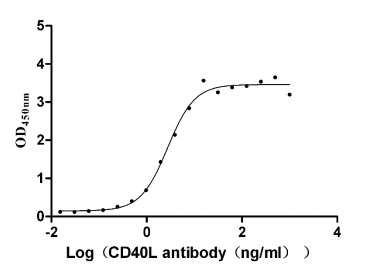
-AC1.jpg)
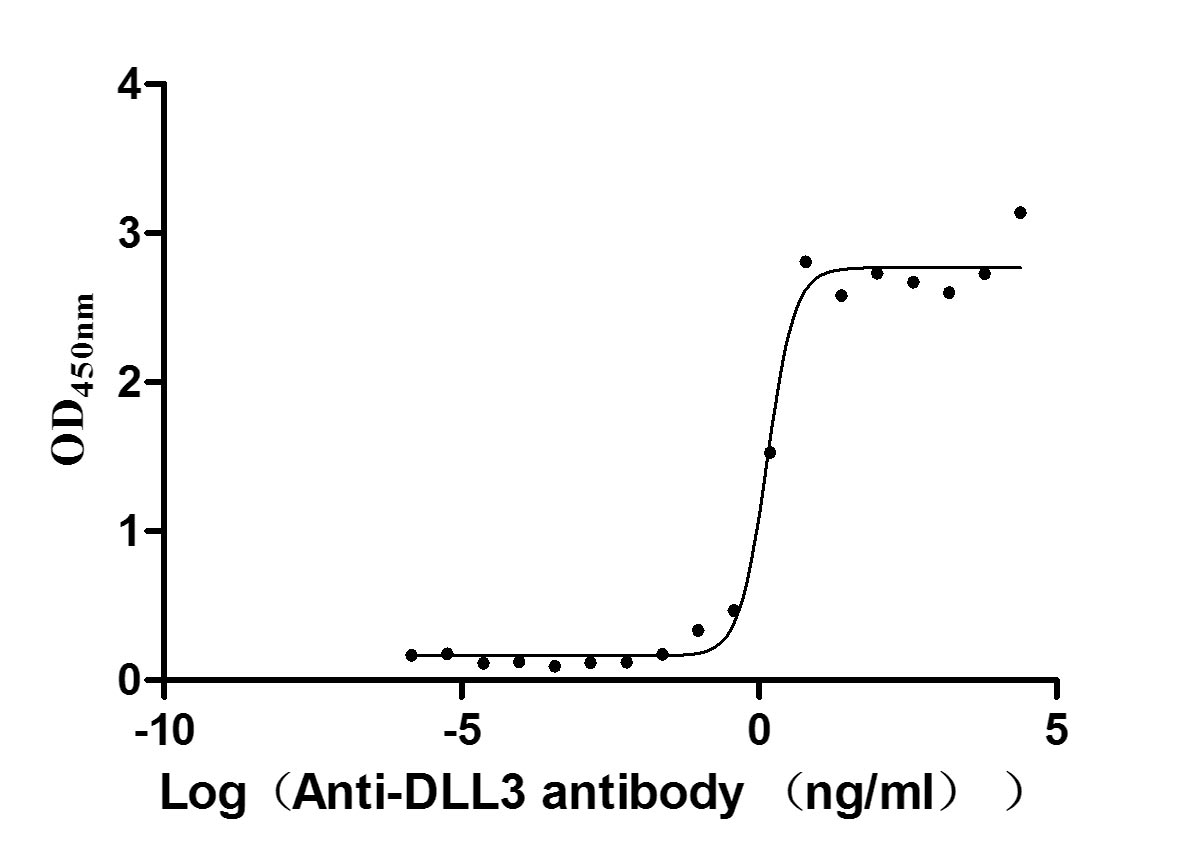
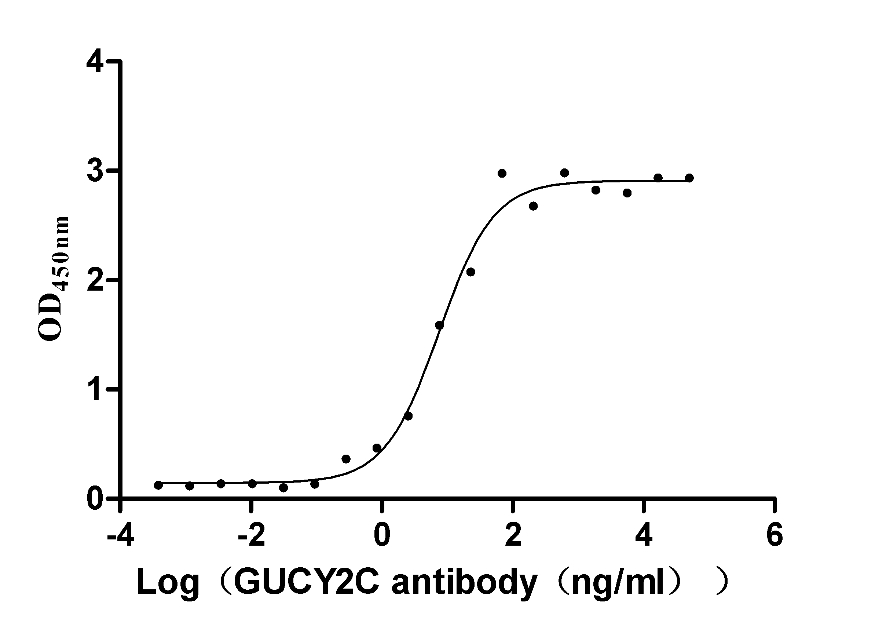
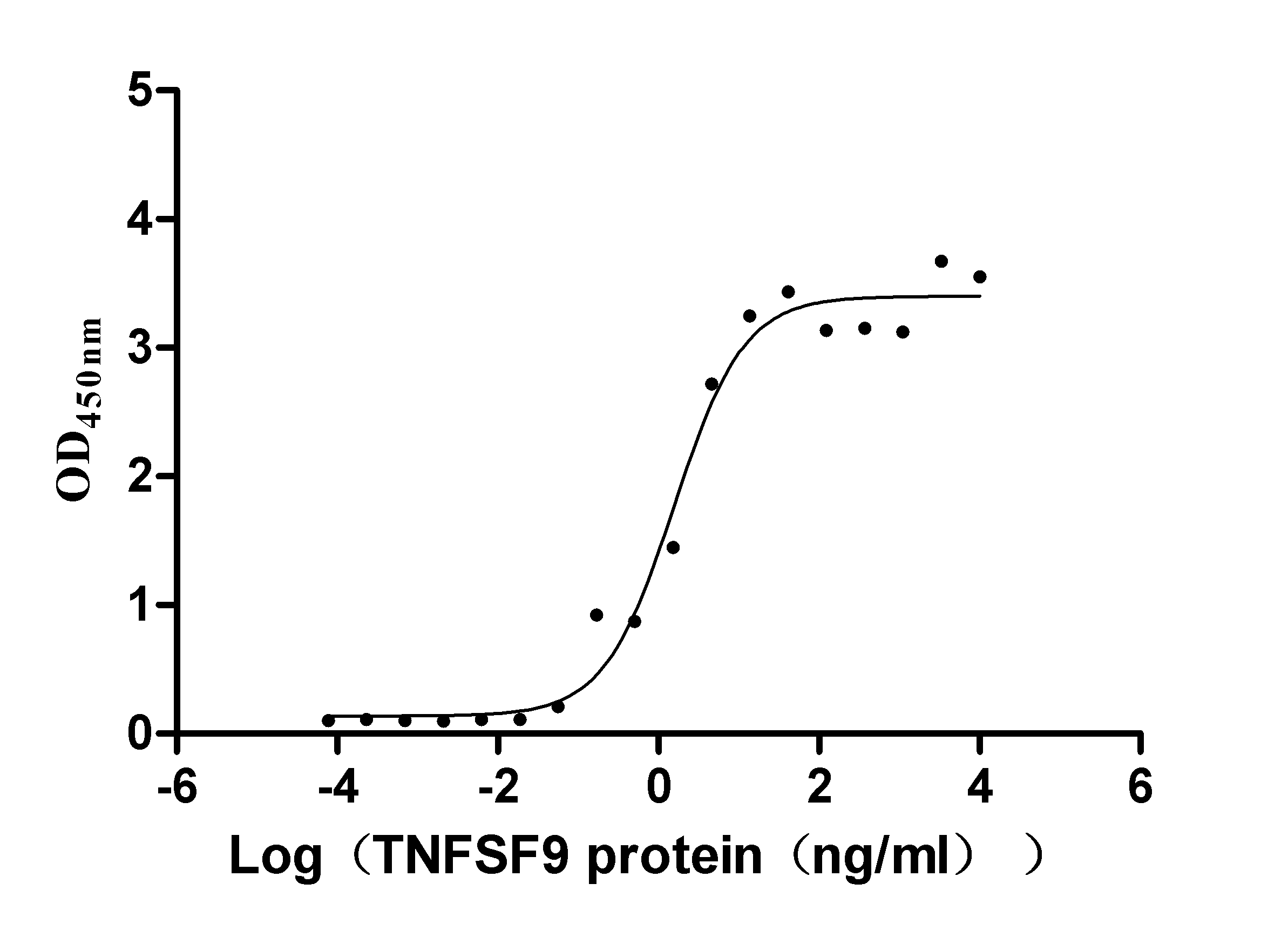
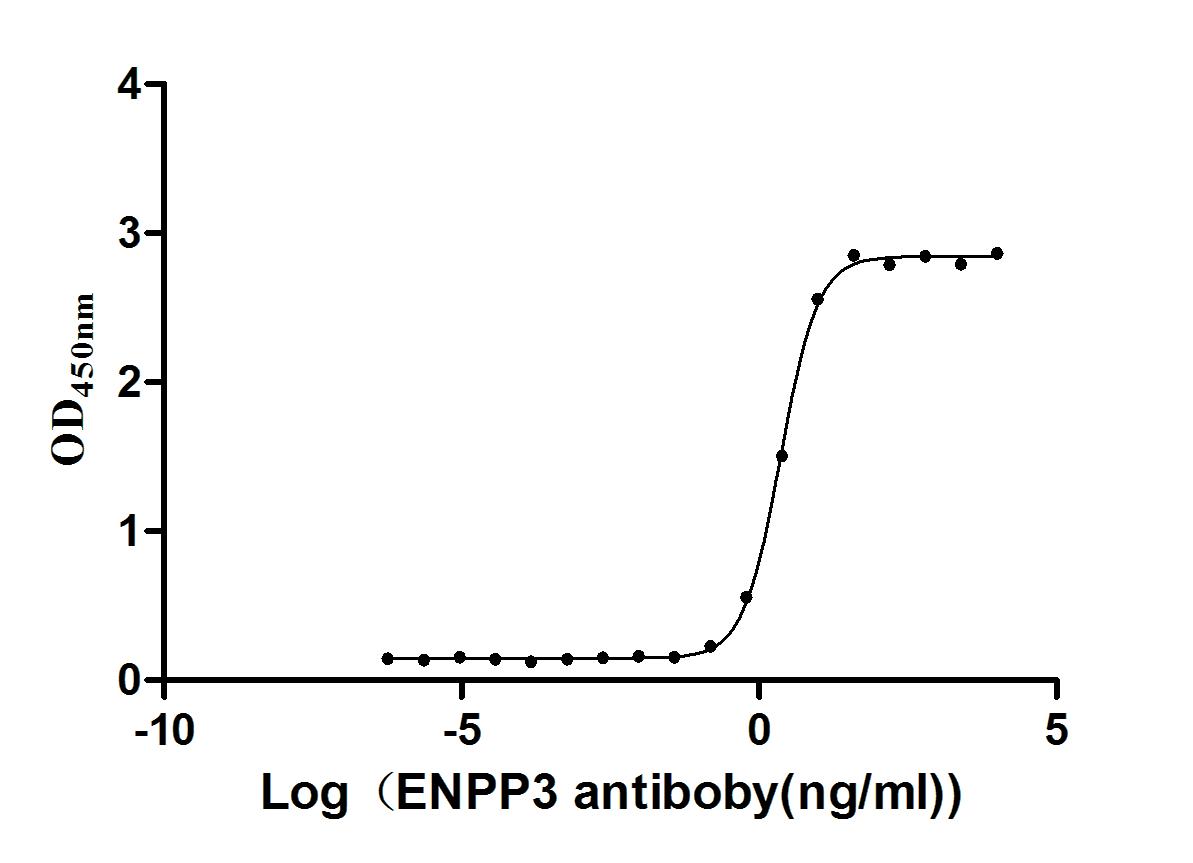
-AC1.jpg)











